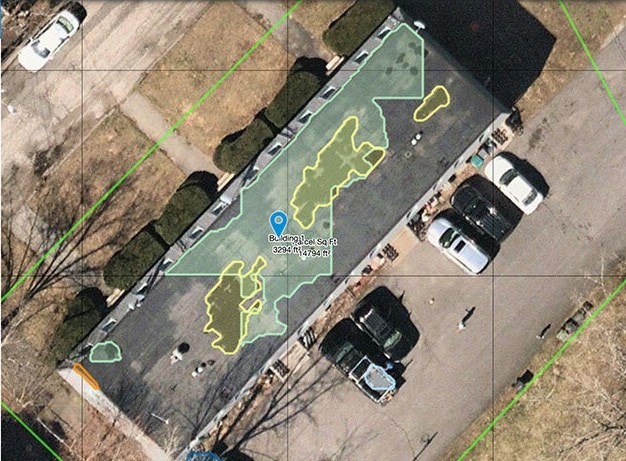Even after a year of unprecedented advances, the pace of technological innovation in P&C insurance will only accelerate in 2024. Amid rising risks, renewed economic uncertainty, and heightened competition, insurers will embrace a host of new technologies in their quest to achieve competitive advantage. While only time will tell which technologies prove most valuable in coming months, carriers would be wise to keep an eye on four particularly consequential trends reshaping the industry in the year—and the decade—ahead.
A Generative AI Reality Check Helps Insurers Refine Approaches
In 2023, Generative AI (or GenAI) hijacked the technology agenda in every industry, including P&C insurance. Fully 59% of large insurers have started experimenting with the technology. And it’s easy to see why: Given its ability to generate virtually any kind of content based on the inputs it’s trained on, potential P&C use cases are endless.
Generative AI can analyze vast amounts of internal and external data to guide agents through the sales process for complex products like cyber. It can instantly assess submission data to expedite underwriting and sift through synthetic claims information to identify opportunities for new lines or recommend modifications to existing ones—plus much more. But as the transition from nascent prototypes to full-fledged production begins in the months ahead, insurers will face formidable challenges, including fraud, government scrutiny, and legal entanglements.
As a result, look for the hype around this technology to give way to the pragmatic, nuts-and-bolts aspects of harnessing its potential to the fullest. In 2024, many will discover that a modern insurance platform like Guidewire is required for managing the vast and very different datasets needed to train GenAI applications across the insurance life cycle.
Governance will take center stage, with many insurers instituting a Centers of Excellence (CoE) to ensure data privacy and security, transparency on training data, and compliance with evolving regulatory mandates. Like their major carrier brethren, regional insurers will learn they must tap multiple large language models (LLMs) simultaneously to corroborate output details and prevent AI “hallucinations” that can reinforce biases or lead to errors. For those who get it right, the payoff could be huge: McKinsey estimates Generative AI and other advanced forms of artificial intelligence could contribute up to $1.1 trillion in annual value for the P&C insurance industry worldwide.
‘Climate Madness’ Brings More Risks, Massive Opportunities
Capgemini estimates the economic loss stemming from extreme weather events has increased 3.6-fold over the past three decades. From 1980 to 2022, the annual number of billion-dollar disasters in the US averaged eight. Over the past five years, the average soared to 18. During the first three quarters of 2023, there were 23. Worldwide, insured losses for the year were tracking 17% higher than the 21st-century average—and that was before Storm Ciaran left a trail of destruction through Western Europe in November.
The World Economic Forum predicts seven of the 10 most severe risks humanity will face in the next decade are climate-related. Heading into the 2023 UN Climate Conference, UN Secretary-General António Guterres implored humanity to “stop the climate madness” and avert opening “the gates of hell.”
The insurance industry is highly vulnerable to climate-related risk, of course. But it can also be indispensable in shielding society from the worst impacts. To succeed, insurers must end their reliance on historical data and past loss experience and acknowledge the dynamic nature of the perils we face today. Hawaiian wildfires fueled by winds from a hurricane 500 miles away represent just one particularly calamitous example from the past year.
In 2024, carriers dependent on adding exclusions, increasing premiums, and pulling out of entire regions to minimize climate risks will start to forfeit share to savvier rivals. In coming months, a growing list of insurers will begin augmenting traditional forms of data with real-time geospatial intelligence and predictive analytics from sources such as HazardHub, Betterview, and others to understand and price risk accurately and profitably on a property-specific basis. Initiatives like the Earth Visualization Engines project—dubbed “the CERN of climate science“—promise further precision to come.
In particular, look for radar-imaging satellite technologies capable of peering through cloud cover to gain more traction in the year ahead. These solutions provide near-real-time situational awareness that can help carriers efficiently manage CAT response, optimize claims outcomes, and proactively guide policyholders out of harm’s way. These and other technologies will also help carriers meet a growing list of mandates like California Regulation 2644.9, requiring rate reductions to policyholders implementing mitigation measures in an insurance market worth $11 billion.
Digital Claims Disbursement Becomes a Powerful Differentiator
Today, nearly 60% of consumers choose to do business with companies based partly on the digital payment options offered. Yet paper checks continue to make up a large portion of transactions in the P&C sector. When you consider that 85% of consumers prefer digital payment options, and half of those 27 or younger have never written a check or know what to do with one, the need to adopt digital payments comes into sharp relief.
But fair warning: In 2024, digital premium collection via card-not-present transactions, mobile wallet payments, pay-by-text, and other digital payment modalities may be table stakes compared to instant claims disbursement.
In a recent survey, 60% of consumers reported receiving their last claim payment by snail mail, with 50% having to wait three or more days to access the money. In fact, $300 billion of the $400 billion in annual claim disbursements made by P&C insurers involves physical checks. So it’s no surprise that more than half of all consumers would consider ditching their current insurer for one offering instant digital claims payments deposited to their bank accounts, a debit card, or a payment app.
Outbound digital payments to policyholders and vendors can reduce payment costs by 50%, according to Ian Drysdale of insurance industry payments provider One Inc. By resolving claims in one day instead of eight, insurers can also cut the average cost of a claim by $374 or more. Watch for carriers seeking to meet the growing demand for digital payments to prioritize enterprise-class solutions that are fully integrated to their core systems across billing and premium and claim payment operations. The savviest will use these technologies to innovate products such as parametric insurance, seen as key to closing the protection gap for some of those climate risks discussed above.
Ecosystems Accelerate Transition From Personal Lines Auto
Despite encouraging signs for personal lines auto in 2024, the sector remains at an inflection point. As sales of traditional, gas-powered cars continue their downward drift, connected car technologies will increasingly redefine consumers’ relationships with their personal vehicles and reshape what they need and expect from insurers.
Carriers already understand the importance of building partner ecosystems that allow them to embed insurance distribution directly into the purchase of a new car—a trend expected to account for 30% of all personal auto premiums by decade’s end. And they’re quickly developing data ecosystems that enable them to offer telematics-based, “pay-as-you-drive” insurance and other value-added products. By 2025, there will be more than 60 million UBI subscribers worldwide. By 2028, the global UBI market will top $80 billion, up from just $30 billion in 2023.
But in 2024, savvier carriers will look a little further down the road. Over time, connected car technologies and a shift toward larger population centers will result in more people choosing to forego personal car ownership and opting instead for autonomous robot-taxis like Waymo and Cruise as well as shuttles and other transportation choices. According to Ernst & Young, this could shrink existing personal lines auto premiums by as much as 44% worldwide by 2035. In the US, as much as 75% of those revenues could get decimated.
In the months ahead, look for carriers to begin investing in the ecosystem and cloud infrastructure enhancements they need to fill this gap by innovating where their most astonishing opportunities await: commercial lines. Think of multi-modal coverage models that toggle between personal and commercial auto insurance as liability moves between driver and manufacturer, depending on usage, at the press of a button. Or new service models like mobile EV charging stations used in roadside assistance. Others include new forms of micro-mobility coverage for rapidly growing fleets of e-bikes, e-scooters, quadricycles, and more—as well as “Mobility-as-a-Service” offerings that cover mobility journeys—no matter the public or personal modes of transportation involved—instead of the physical vehicles themselves.
Navigating the New Year–and Beyond
If the past year has taught us anything, it’s that technology trends can go from zero to ChatGPT in an instant. For insurers, relying solely on internal resources to attain the technological prowess needed to thrive in the face of ever-evolving challenges is no longer realistic. Nor is it even necessary. Today, carriers can rapidly launch new capabilities that fully utilize the data and functionality built into a modern insurance platform like Guidewire. Combined with the right strategies, it can mean thriving amid ever-evolving threats and making the most of the best new opportunities—in 2024 and beyond.



